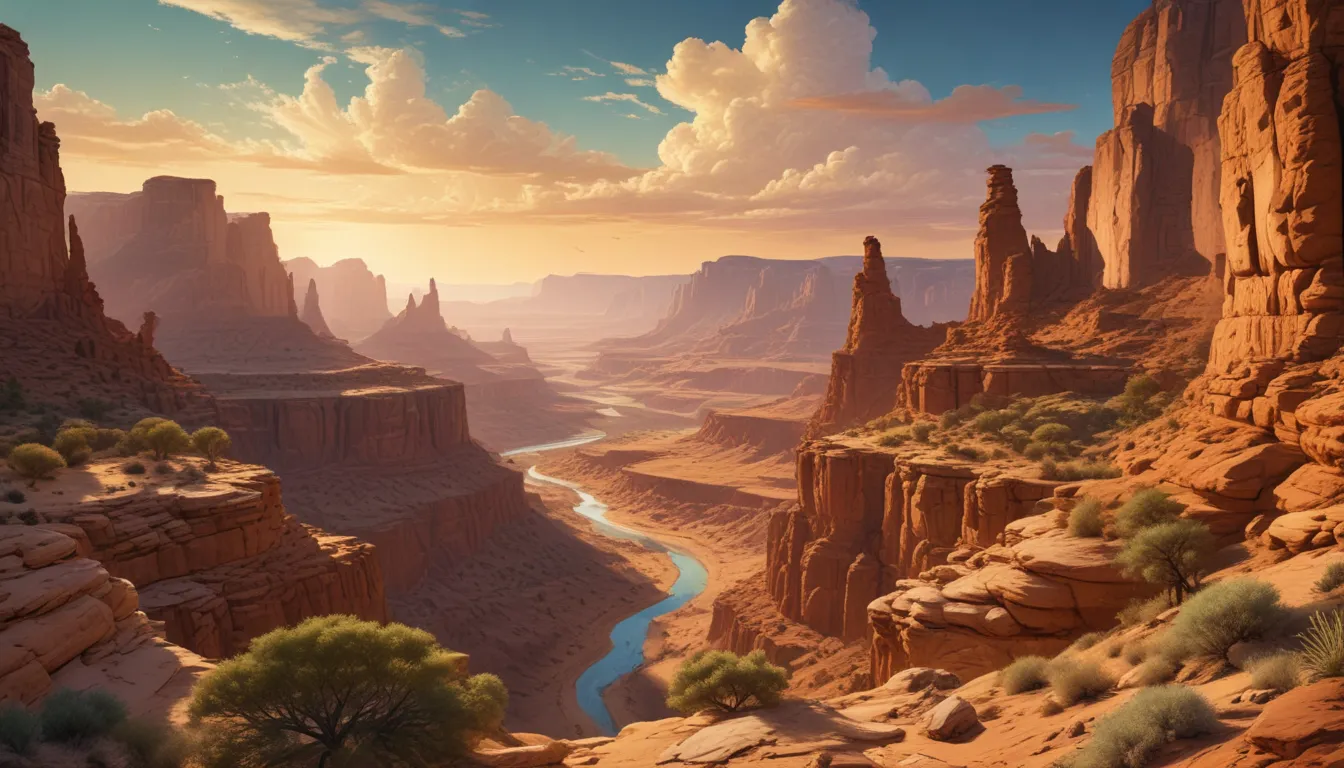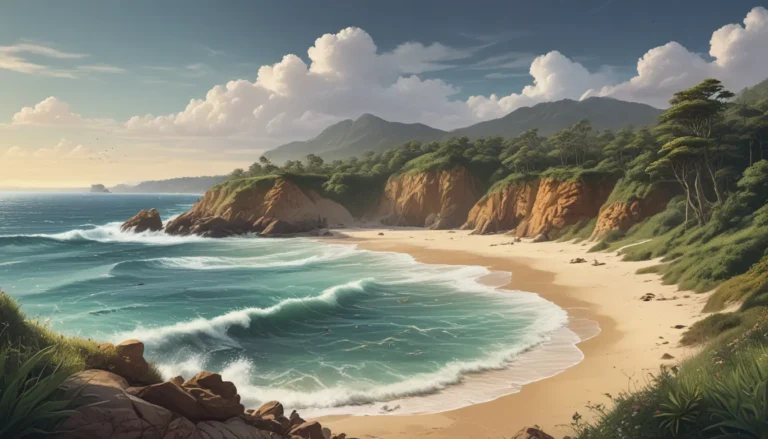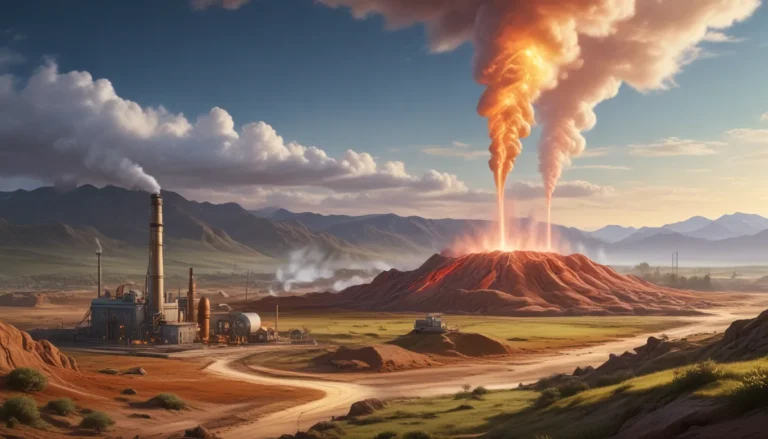A Note About Images: The images used in our articles are for illustration purposes only and may not exactly match the content. They are meant to engage readers, but the text should be relied upon for accurate information.
Mesas, also known as table mountains, are captivating geological formations that can be found in various parts of the world. These unique landforms have intrigued geologists and nature enthusiasts for centuries, offering a glimpse into Earth’s history and natural processes. In this insightful article, we will delve into 10 astonishing facts about mesas, exploring their formation, characteristics, and cultural significance. Join us on a journey through breathtaking landscapes and discover the enchanting realm of these remarkable geological wonders.
Mesas: Nature’s Tabletop Creations
Mesas are table-like formations found in deserts, characterized by their flat tops and steep sides that stand tall amidst arid landscapes. The word “mesa” stems from Spanish, meaning “table,” perfectly describing the shape of these geological wonders. These formations are shaped by erosion over millions of years, resulting in their distinctive flat-topped appearance.
Mesas Across the Globe
Mesas can be found worldwide, inspiring photographers and artists with their unique shapes and colors. While commonly associated with the American Southwest, mesas also grace landscapes in Africa, Australia, and Asia. These geological marvels offer breathtaking panoramic views and are home to unique plant and animal species adapted to the harsh desert conditions.
Cultural Significance of Mesas
Many mesas hold deep spiritual significance for indigenous cultures, serving as sacred sites for Native American tribes. These formations have ancient cliff dwellings built by civilizations such as the Ancestral Puebloans, showcasing architectural prowess and cultural heritage. Mesas are not just geological wonders but also hold a vibrant history intertwined with human civilization.
Mesas in Popular Culture
Some of the most iconic examples of mesas include the tabletop mountains in South America, known as tepuis in Venezuela and Brazil. These stunning formations have captured the imagination of explorers and filmmakers, adding to their allure and mystique. Mesas have also become popular subjects for photographers and artists, thanks to their unique shapes, vibrant colors, and dramatic lighting.
Mesas: Nature’s Masterpieces
Mesas are truly fascinating geological formations that continue to awe and intrigue both scientists and tourists alike. From their formation through erosion to their role as sacred sites for indigenous communities, mesas offer a plethora of astonishing facts that shed light on the wonders of our natural world. Their breathtaking landscapes and rich histories make mesas a subject of study and admiration for all those who appreciate the beauty of nature.
FAQs About Mesas
- What is a mesa? A mesa is a flat-topped hill or mountain with steep sides, usually made up of sedimentary rock layers.
- How are mesas formed? Mesas are formed through erosion, where wind and water gradually wear down the surrounding rock layers.
- Are all mesas the same height? No, mesas can vary in size and height, with some reaching several hundred feet in height.
- Can mesas be found worldwide? Yes, mesas can be found in various regions around the world, showcasing their global presence.
- Do mesas hold cultural significance? Yes, many indigenous communities consider mesas to be sacred sites with deep spiritual significance.
- Are mesas accessible for exploration? Many mesas are open to the public and offer hiking trails or viewpoints for visitors to enjoy.
- What precautions should be taken when visiting a mesa? Visitors should follow safety guidelines, stay hydrated, wear appropriate footwear, and be prepared for changing weather conditions.
- Can mesas change over time? Yes, mesas can undergo changes due to ongoing erosion processes, altering their appearance over time.
- Are there famous mesas? Yes, notable mesas include Montezuma Castle National Monument in Arizona, USA, and Table Mountain in Cape Town, South Africa.
- Can mesas be seen from a distance? Mesas are often visible from afar, creating stunning landmarks in the surrounding landscapes with their unique shapes.
Mesas are truly remarkable natural wonders that invite us to explore the beauty and mysteries of our planet. Whether admiring their breathtaking vistas, learning about their formation, or appreciating their cultural significance, mesas offer a fascinating journey of discovery for all who seek to delve into the wonders of nature.
Explore More with Mesas
If you found these facts about mesas intriguing, consider exploring more captivating topics. Discover the educational institutions that shape minds in Costa Mesa, California, or learn about the thriving industries and economic growth in La Mesa, California. For outdoor enthusiasts, the Solo Stove Mesa offers a portable and efficient way to enjoy campfires on your next adventure. Each topic promises a unique and engaging journey of knowledge and discovery.
Trustworthy Content Guarantee
Our commitment to delivering trustworthy and engaging content is at the core of what we do. Each fact on our site is contributed by real users like you, ensuring a wealth of diverse insights and information. Our dedicated editors meticulously review each submission to maintain the highest standards of accuracy and reliability. Explore and learn with confidence, knowing that the facts we share are not only fascinating but also credible. Trust in our commitment to quality and authenticity as you embark on a journey of discovery with us.






